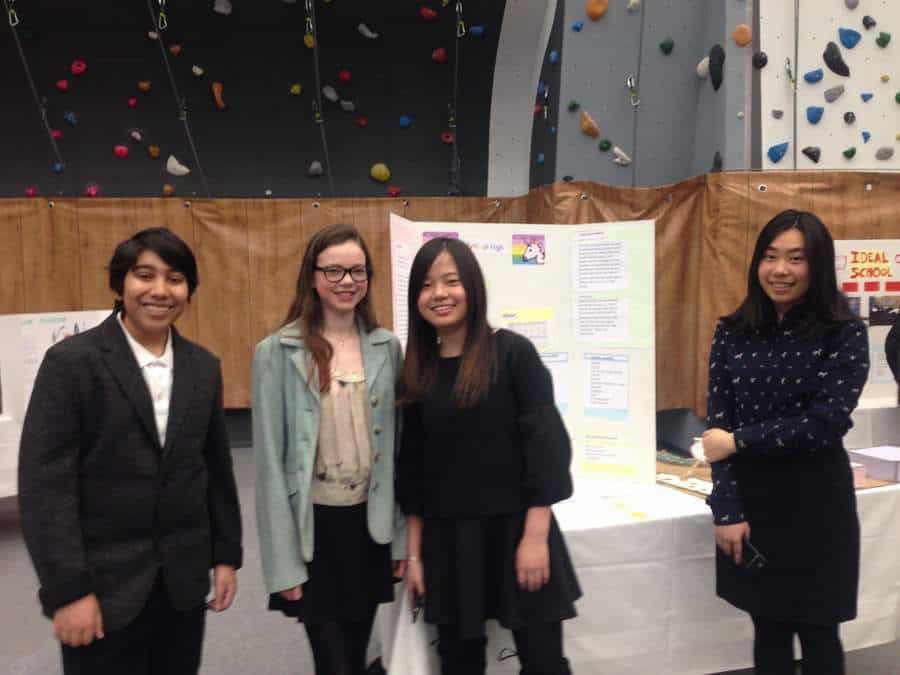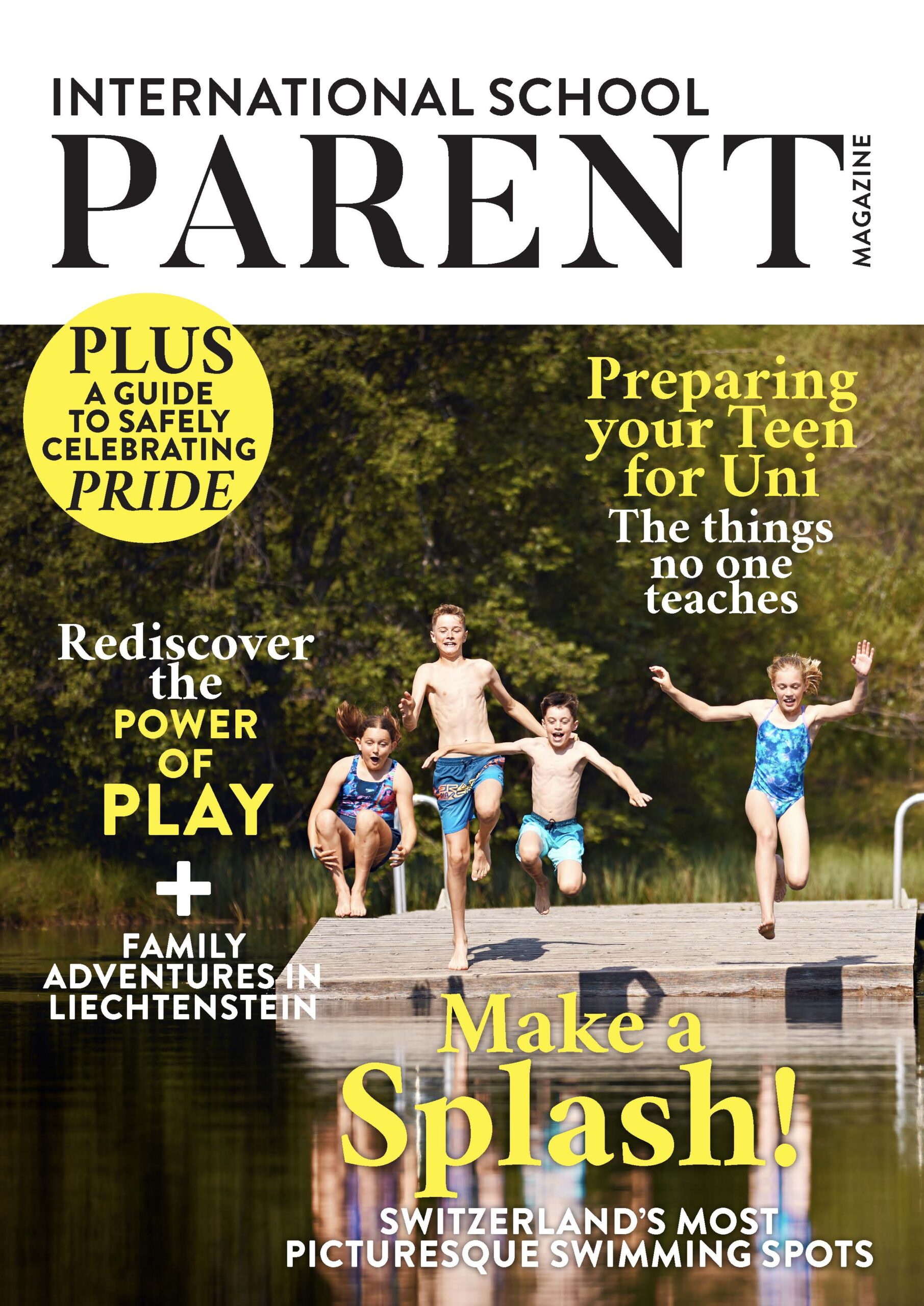The Search for the Ideal School

Parents want their children to have the best school experience possible. Teachers want to teach in the most satisfying school possible. And kids want … well, what do kids want?
This past year at Leysin American School (LAS), we asked the kids. What would you include in your ideal school? What would students learn? How would teachers teach? What would it physically look like?
Teachers and 22 middle school students, ages 12 to 15, met once a week for an hour over two months. On the first day we told students that they would be presenting their ideal schools in a poster session at a conference at our school, to which all of our seventh through tenth graders would come as well as some students and faculty members from other schools. We also told them that an expert in ideal schools, Alys, would arrive in the last weeks of the project to give feedback on the students’ ideal schools based on her many school visits across the world.
In the first few sessions, students researched school systems (e.g. national systems in Norway and Saudi Arabia, charter schools in the United States) or particular philosophical stances (e.g. Steiner Waldorf and Green Schools). Students recorded what they learned about the school systems in preparation for a mock school board meeting.
We convened the school board in Week 3. Into a hat went the roles of school board members, visiting salespersons, parents in the audience, and school personnel. There was only one agenda item: choosing the ideal school for a new middle school that was going to be built in the district.
Students worked in groups for the next several weeks to complete a list of tasks they needed to accomplish to present their ideal school. Their completed tasks would be assembled into poster sessions at the conference.
As one could predict with middle school students, some groups jumped eagerly into the task and others held back, distracted by this or that, until the last week when we found extra time to get everything finished and glued together. The finished products looked good: three-ply posters, architectural models of cardboard or plastic (printed on a 3D printer), media on laptops, and even trifold handouts and business cards made by one group of industrious girls.
The day of the conference the students arrived in professional dress. They presented their work and answered questions before meeting in a breakout session with Alys. Slyly, Alys had prepared her talk to show links between schools she had visited and these new student projects.
During the first Ideal School meeting time that Alys attended, she spoke to students in each of the six groups and asked them tricky questions about the ethos of their schools. Through these dialogues she was able to understand the positionality of the schools that they were creating. On the surface it appeared that four out of the six schools seemed very similar to LAS, which on the one hand was a credit to the current system, but on the other hand raised questions of how seriously the students had taken up the challenge to design their own ideal school. However, once Alys began to get to know the students she was able to dig further and extrapolate what made each school unique.
One group of students explained how their school had no grades and was based on a project-based curriculum in the arts where the gardening class grew the vegetables to be cooked in cookery classes and where science, maths and English were incorporated into each project. Alys shared with them how their vision was similar to the Putney School, a progressive boarding school in Vermont, which she visited in 2013. The Putney School has a school farm and students are involved in all parts of the animal husbandry, including getting up at 5:30 a.m. to do the milking!
Another group, although keen to continue traditional subjects, keep similar teacher roles, homework, and grading, wanted to change the classroom environment from rows of desks to an open plan with movable benches. Alys told the students about Solvik, a Steiner Waldorf free-school in Järna, Sweden, which she visited in 2011. Solvik also has open plan classrooms with moveable furniture, fireplaces to sit beside, and big window ledges to perch on.
A third group optimised something that is important in the day-to-day life of these 12 to 15 year olds, namely “gaming.” Their school was designed to be run by international gaming champions, where gaming skills would be taught and homework would be finishing a level. The building design had a huge auditorium for collaborative games and a massage parlour for aching shoulders from long gaming sessions. In addition to gaming there was math and physical education classes. Alys showed them photos from her 2016 visit to the Green School in Bali, where the middle school uses gaming approaches in project based learning.
Alys explains her background:
“I am a teacher and currently I am in the final year of a PhD, on a scholarship from the University of Hull, UK in Freedom to Learn. I am using autoethnography to search for my Ideal School around the world. My research has taken me to over 150 schools in 19 countries. I have been to public and independent schools, with wide ranging pedagogies from traditional to alternative, including progressive, democratic, and home education. As I visit each school (or place of learning), I look for the “gems” (the aspects that to me make that place exciting) and then share these impressions and approaches with other people that I think will be interested in learning about these ways and might use them to make changes of their own. I am seeing myself as a “cultural broker” (from Giroux, 2015) on an iterative, rhizomatic journey sharing stories of educating differently.”
In addition to sharing her own gems with the middle school students at LAS, Alys also developed a survey of open-ended questions for the students to complete the day after the conference. In this manner the LAS middle school students can share their thoughts with all of us.
- The results showed that homework that was not finishing work from class was not a popular option, although a couple of students felt that optional extra work was fine but shouldn’t be compulsory for all.
- Eleven of 17 students supported school systems that had grades. A few of them felt that grades would help them to know their progress and skill level. However, many students emphasised that grades in their Ideal School were not very important. They were concerned that an overemphasis on grading would decrease confidence and self-esteem.
- Thirteen of 18 students did not want a school uniform. The arguments were in favour of supporting students’ own ability to be unique, the need to be comfortable, and the desire to have their own choice in what they wear. The five students who were in favour of school uniforms thought that a uniform made everyone more equal, which could prevent bullying. But, they added, the uniform policy would have to have a wide range of options to choose from.
- There was unanimous support for their Ideal School having classes, although Alys had repeatedly emphasised that the Ideal School does not need to be in a building nor even have a time-table, sharing with students notions about “Democratic Education”. One sceptical student responded: “Our ideal school would have classes because without classes the school isn’t a school”.
- There was also unanimous support for having teachers, which was great news for us teachers. Especially because teachers familiar with the Ideal School project were jokingly worried about their jobs! Alys observed the influence of the current use of team-teaching in the Middle School on student responses, with several commenting that the Ideal School would have small classes with two teachers. Some students recognised that the role of the teacher was to keep the students safe and that teachers could play a different role, supervising and guiding more self-directed learning. However, some agreed they prefer teacher-led instruction rather than self-led learning.
Specific suggestions for LAS included a request to start later: 9 a.m. instead of 8 a.m., for example. The later start in the morning was supported by the argument that “students need to be more awake in order to learn better.” Students would also like more choice when it comes to which classes they attend … and more recess! There was also a suggestion that students be able to give feedback on school rules as “it is important to be fair and let the students suggest something.” These comments might suggest a trend towards students being more autonomous in their education, a central goal of the LAS middle school.
Working on projects with the goal of presentations at a school conference – with outside visitors, professional dress, and that little extra edge of sharing one’s work with strangers – helped some of the middle school students to think outside the box. Hats off to the students who took up the challenge! They created something new and provided all us parents and educators with some insights to reflect on.
Parent organisations and schools interested in running an Ideal School project are invited to contact Alys (al****@***il.com) and Paul (pm*******@*as.ch) for tips based on what they learned during the course of this project. Best of luck on your own searches for the Ideal School!
Contributed by:
Alys Mendus, University of Hull, UK
Paul Magnuson, Leysin American School, Switzerland
More from International School Parent
Find more articles like this here: www.internationalschoolparent.com/articles/
Want to write for us? If so, you can submit an article here: www.internationalschoolparent.submittable.com
